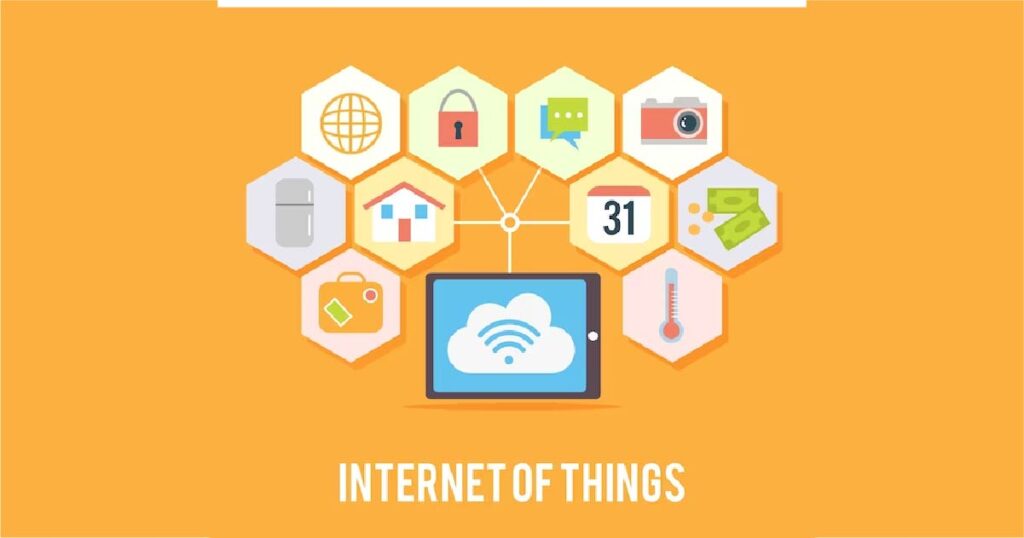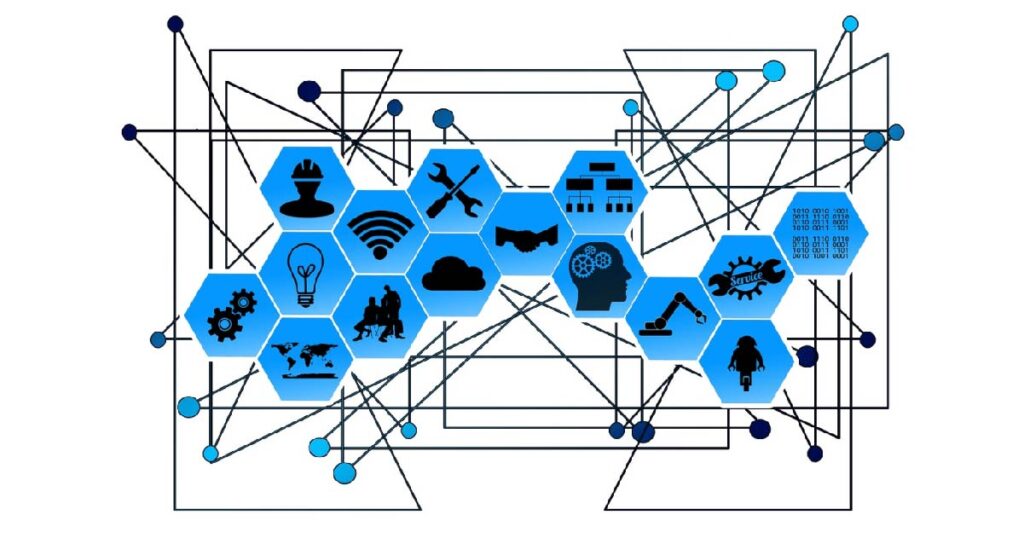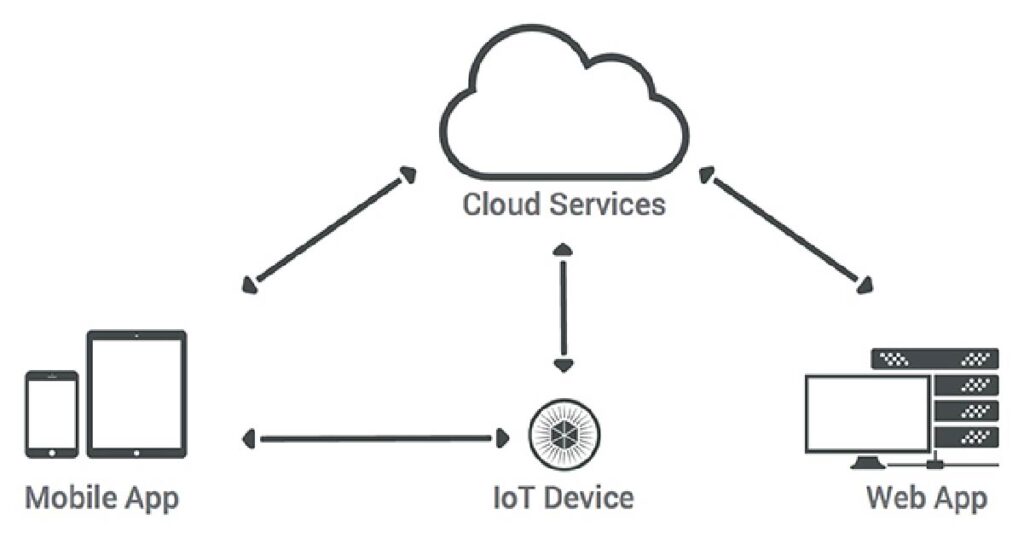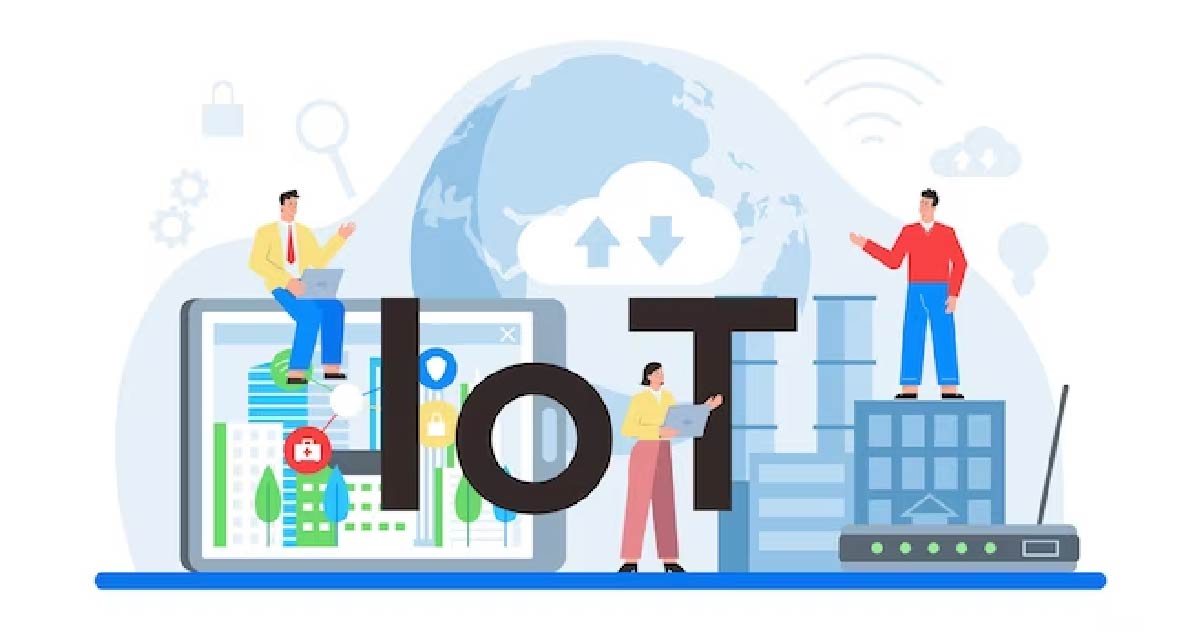Introduction
In the ever-evolving landscape of technology, The Internet of Things short for IoT) is changing the way we interact with the world, as it intertwines with both the physical and digital realms since its emergence. This has led to an increased demand for skilled professionals in this field. The goal of the thorough guide "Top 25 IoT Interview Questions and Answers" is to provide people with the information and understanding necessary to succeed in IoT interviews. Not only does this guide explore the intricacies of IoT, which includes fundamental concepts, advanced protocols, security considerations, and real-world applications, it also emphasizes the importance of problem-solving, adaptability, and a holistic understanding of interconnected systems. By going through carefully selected loT interview questions, individuals are sure to be empowered with the knowledge and confidence to excel in any interviews and be able to contribute meaningfully to the ever-expanding universe of IoT.
Basic IoT interview questions
- Q1: What is the Internet of Things (IoT) and why is it important?
This sets the pace for our loT interview questions. loT which stands for The Internet of Things, is a network of interconnected devices, vehicles, appliances, everyday objects and network connectivity that collect and exchange data with each other over the internet. Its importance lies in its ability to create a connected world, generating opportunities and efficiencies across various industries. IoT devices gather real-time data, enabling in-depth analysis, facilitates automation, improves quality of life, enhances connectivity between people, devices and systems. Likewise, these devices help reduce cost and utilize recourses efficiently, offers solutions to enhance security, while driving innovation and creating opportunities for growth.
- Q2: Can you explain the basic components of an IoT system?

LoT interview questions such as this is to be expected. A IoT system consists of devices, sensors, actuators, embedded systems, communication protocols, networks, data processing, gateways, cloud infrastructure, user interfaces, application logic, security, device management, and monitoring and analytics. These components work together to enable seamless data flow between devices and the cloud, ensuring security, reducing latency, and optimizing performance. IoT applications include user interfaces, application logic, and secure communication protocols.
- Q3: What are the differences between IoT and M2M (Machine to Machine) communication?

IoT and M2M communication are related concepts but have distinct differences. IoT involves interconnecting devices, sensors, and systems to the internet, while M2M focuses on direct communication between machines or devices without human intervention. IoT emphasizes data handling and analytics, while M2M focuses on specific tasks or applications. IoT systems are designed for scalability, while M2M may be deployed in specialized environments. Both concepts aim to create a comprehensive, interconnected ecosystem.
- Q4: How do IoT devices communicate?

Various protocols and technologies are used by IoT devices to communicate, depending on their use, range, power needs, and data volume. MQTT, HTTP/HTTPS, CoAP, AMQP, Bluetooth and BLE, LoRaWAN, NB-IoT, and Wi-Fi are examples of common techniques. MQTT is lightweight and open, used for low power consumption and real-time communication in industrial automation and home automation systems. Cloud-based services in smart homes run over HTTP/HTTPS. Bluetooth and BLE enable peer-to-peer communication, while AMQP enables dependable and compatible messaging. For low-power, wide-area IoT devices, NB-IoT is appropriate.
- Q5: What are some common challenges faced in IoT deployments?
loT interview questions on deployments are frequently asked. Data privacy, interoperability, scalability, data management, power consumption, battery life, reliability, connectivity, costs, ROI, regulatory compliance, insufficient skills, and lifecycle management are some of the challenges that IoT deployments must overcome. These issues require a holistic approach considering technical, organizational, and regulatory aspects. Addressing these challenges requires developing standards, enhancing security measures, and improving interoperability. For IoT deployments to be successful, universal standards must be developed and data privacy, interoperability, power consumption, battery life, reliability, and end-of-life considerations must be addressed.
Technology and Architecture loT interview questions
- Q6: What is the role of a gateway in an IoT network?
An IoT network's gateway, which enables communication between devices and the cloud or central server, is an essential middleman device. Protocol translation, data aggregation, interoperability, scalability, device management, offline operation, security, local processing, network management, and power optimization are all made easier by it. Gateways translate data between different protocols, optimize bandwidth usage, protect sensitive data, and enable interoperability between devices with different protocols or standards. They also manage device lifecycles, ensure data continuity, manage power consumption, and ensure interoperability.
- Q7: Can you explain the concept of 'Edge Computing' in IoT?
A distributed computing paradigm known as "edge computing" handles data close to the device in order to minimize latency, maximize bandwidth, enhance privacy and security, facilitate offline operation, allow for real-time decision-making, support scalability and redundancy, and maximize resource efficiency. It is suitable for various IoT use cases, such as smart cities, industrial automation, healthcare, and retail. Edge computing often works in conjunction with cloud computing, enabling a hybrid architecture that leverages the strengths of both. With this decentralized method, latency issues are resolved, bandwidth usage is optimized, privacy and security are improved, and real-time decision-making is made possible in a variety of IoT applications. This is one of the frequently asked loT interview questions on technology and architecture one can expect.
- Q8: How does IoT leverage cloud computing?
Cloud computing is leveraged by IoT to manage massive volumes of data, carry out elaborate analytics, offer centralized and scalable services. Cloud computing offers reliable storage, scalable computing power, advanced data analytics, real-time processing, device management, global accessibility, security, cost efficiency, integration with other services, and hybrid and edge-cloud architectures. t permits global accessibility, real-time event response, real-time monitoring, security, compliance, and cost-efficiency, freeing up organizations to concentrate on value creation and innovation rather than complicated infrastructure management.
- Q9: What are the main protocols used in IoT for communication?
Communication protocols for the Internet of Things (IoT) include Bluetooth, BLE, Modbus, DDS, LoRaWAN, HTTP/HTTPS, AMQP, MQTT, CoAP, and WebSockets. These protocols are chosen based on application requirements, network constraints, power consumption, and interoperability. For low-bandwidth, high-latency networks, MQTT is lightweight, whereas CoAP is effective for devices with limited resources. AMQP facilitates dependable communication, while HTTPS offers secure HTTP access. WebSockets offer real-time, bidirectional communication, while DDS is best for distributing data in real-time.
- Q10: What is the significance of MQTT and CoAP in IoT?
This is also one of the frequently asked loT interview questions. MQTT and CoAP are two key communication protocols in the IoT (Internet of Things) space. MQTT is lightweight, suitable for devices with limited bandwidth and processing power, and supports different Quality of Service levels. It is widely adopted and supports various devices, platforms, and cloud services. CoAP is designed for constrained environments, follows a RESTful design, and offers low latency and scalability. It can be used on devices with low memory and bandwidth because it supports block-wise transfers and runs over the User Datagram Protocol (UDP).
Security and Privacy loT interview questions
- Q11: What are the primary security concerns in IoT?
One always meets loT interview questions on security and privacy. Due to the large number of linked devices, various communication protocols, and potential security breaches, the Internet of Things (IoT) presents a complex security landscape. Device security, data privacy, unprotected communication, network security, lack of standards, device identity and authentication, vulnerabilities in firmware and software, physical security, inadequate lifecycle management, and supply chain security are the main issues. Strong authentication procedures, secure boot procedures, frequent firmware updates, secure communication protocols, secure network security, and industry-wide security standards must all be put in place to lessen these problems.
- Q12: How can IoT devices be protected against cyber attacks?
Organizations should enforce the least privilege principle, implement physical security measures, conduct security audits and testing, educate users and administrators on security best practices, implement robust device management, secure device identity, secure boot processes, network segmentation, encryption at rest, continuous monitoring of device behavior, secure over-the-air updates, and implement strong authentication in order to protect IoT devices from cyberattacks. By adopting a multi-layered approach, organizations can significantly reduce the risk of cyber attacks on IoT devices and maintain the integrity and trustworthiness of their deployments.
- Q13: Explain the concept of 'security by design' in IoT.
In the context of IoT, "security by design" refers to incorporating security safeguards at every stage of the development of systems, networks, and devices. This proactive approach prioritizes security features, protocols, and best practices, ensuring the confidentiality, integrity, and availability of data. Risk assessment, secure architecture, encryption and authentication, least privilege principle, secure software development, continuous monitoring and updates, user education and training, standard compliance, and privacy by design are some of the fundamental ideas. IoT systems are made more secure and resilient with this proactive approach.
- Q14: What are the best practices for ensuring data privacy in IoT?
loT interview questions such as this aims to test how well you know your technology. Organizations should use best practices like user awareness, secure data transmission, anonymization, frequent security audits, device authentication, privacy by design, secure device lifecycle management, adherence to data protection laws, user education, and data privacy impact assessments to ensure an IoT ecosystem that respects user privacy. These practices help build trust, protect user privacy, and ensure the security of IoT devices and systems. To guarantee compliance and safeguard users and organizations, regular assessments and data protection laws are also essential.
- Q15: How does IoT impact regulatory compliance and standards?
Standards and regulatory compliance have been greatly impacted by the Internet of Things (IoT) in a number of different industries. The following are affected: regulations pertaining to data privacy and security; interoperability; cybersecurity; device certification requirements; energy efficiency and environmental standards; healthcare compliance; automotive and transportation; smart grid and energy standards; telecommunications; cross-border data transfer; ethical and responsible AI guidelines; and consumer protection. Because there is a greater attack surface for cyber threats due to the growing number of IoT devices, regulatory bodies are trying to set guidelines to guarantee the responsible and secure deployment of connected devices.
Data Management and Analytics in loT interview questions
- Q16: Why is data analytics crucial in IoT?
This is one of the popular loT interview questions on data analytics. Data analytics is crucial in IoT for many reasons. Actionable insights, operational efficiency, real-time monitoring and control, predictive maintenance, cost optimization, enhanced customer experiences, resource optimization, scalability and performance optimization, innovation, and compliance reporting are all provided by it. Through the examination of substantial amounts of data, establishments obtain practical understandings that enhance decision-making, streamline procedures, and stimulate creativity.
- Q17: How is Big Data related to IoT?
Because they are interconnected, big data and the internet of things are closely related. Large volumes of data are generated by IoT devices, which Big Data technologies effectively manage. These technologies manage a variety of data formats, enabling businesses to glean insightful information from a multitude of sources. Real-time or almost real-time data processing and analysis is the strength of big data platforms like Hadoop and Spark. They also offer advanced analytics capabilities, such as machine learning and artificial intelligence, to process complex IoT data.
- Q18: What are the challenges of managing data in IoT?
Managing data in loT can be a bit daunting so it is no wonder this is part of our loT interview questions. Data volume, variety, velocity, veracity, security and privacy, integration, scalability, quality, interoperability, real-time analytics, data governance, and cost management are some of the challenges associated with managing data in the Internet of Things (IoT). Robust security measures, standardized data governance, cost management, flexible data processing and analytics tools, scalable and distributed storage solutions, and real-time data processing and analytics solutions are all necessary to meet these challenges.
- Q19: How can machine learning be applied in IoT?
Machine learning (ML) is a key tool in the Internet of Things (IoT) for intelligent decision-making, predictive analytics, and automation. Predictive maintenance, anomaly detection, intelligent energy management, supply chain optimization, smart agriculture, healthcare monitoring, traffic management, industrial quality control, building automation, customer behavior analysis, fleet management, environmental monitoring, asset tracking and management, human activity recognition, and gesture recognition are just a few of the applications for it. Organizations must take into account data quality, model training, real-time processing, and integration with current systems in order to apply ML in the Internet of Things successfully.
- Q20: What is the role of AI in IoT?
No loT interview is done without loT interview questions on AI. In order to improve the effectiveness and accuracy of data analysis, predictive analytics, anomaly detection, automation, natural language processing (NLP), machine learning for personalization, edge computing, robotics and autonomous systems, energy efficiency optimization, dynamic resource allocation, and collaborative intelligence, artificial intelligence (AI) is essential to the Internet of Things (IoT). AI enhances data processing, decision-making, and response to dynamic conditions, reducing costs, minimizing environmental impact, and contributing to sustainability goals. Intelligent, responsive, and efficient systems are developed as a result of the interaction between AI and IoT.
IoT in the Real World – Applications and Case Studies loT interview questions
- Q21: Can you give examples of IoT applications in smart cities?
With such application-based loT interview questions, you can build upon the answers, explaining them in your own way.
- Smart street lighting
- Waste management
- Environmental monitoring
- Smart parking
- Healthcare monitoring and health cards
- Smart energy management
- Water level checking and efficient water supply
Reliable transportation
- Q22: How is IoT transforming the healthcare industry?
Among other things, loT is transforming the healthcare sector by helping improve patient care, increase operational efficiency, and bringing a surge in innovative solutions. Remote patient monitoring, wearable health and wellness, medication adherence, telehealth, hospital asset tracking, clinical trials, senior care, supply chain management, infection control, health data analytics, emergency response systems, personalized medicine, and healthcare workflow optimization are some of the key applications. By making remote patient care, diagnostics, treatment personalization, and overall healthcare delivery possible, these technologies enhance patient care, efficiency, and innovation.
- Q23: Discuss the role of IoT in industrial automation (Industrial IoT).
By integrating smart devices, sensors, and data analytics into industrial processes, the Industrial Internet of Things (IIoT) technology enhances productivity and facilitates real-time monitoring, predictive maintenance, and data-driven decision-making. In order to facilitate remote monitoring, condition-based monitoring, energy management, asset tracking, quality control, robotics, automation, collaborative robots, real-time decision-making, digital twins, safety, compliance, and customized production, it records real-time data on parameters such as temperature, pressure, vibration, and operational status.
- Q24: What are the impacts of IoT on consumer electronics?
The Internet of Things (IoT) has significantly impacted the consumer electronics industry, transforming the way people interact with devices and enhancing their capabilities. Connected ecosystems, wearable technology, voice-activated assistants, smart TVs and entertainment systems, wearable security, smart home appliances, e-commerce integration, security and surveillance, monitoring of health and fitness, energy efficiency, gaming and augmented reality, ongoing innovation, data privacy and security issues, and personalized advertising are some of the major effects.
- Q25: How do you see IoT evolving in the next five years?
Future based loT interview questions are to be expected. Increased interconnectivity, edge computing integration, 5G integration, advances in AI and machine learning, improved security measures, standardization efforts, sustainability, privacy, Industry 4.0 adoption, widespread presence in healthcare, growth of smart city initiatives, and diversification of IoT applications are what I am anticipating for the Internet of Things (IoT) in the future.
Preparing for an IoT Interview in 2024
To prepare well for loT interviews, candidates should review machine learning and artificial intelligence (AI), brush up on networking, comprehend edge computing, explore communication protocols, study security best practices, practice with real-world use cases, grasp core IoT concepts, stay current on industry trends, be familiar with IoT architectures and skimp through frequently asked loT interview questions. Build and experiment with IoT projects, practice behavioral and scenario-based questions, review their resume, take part in mock interviews, and hone their programming skills. In IoT interviews, candidates who customize their preparation according to job requirements and industry focus will stand out.
Conclusion
To sum it up, preparing for loT interviews with the top and frequently asked loT interview questions in this guide is a step towards acing an interview that comes your way. These 25 loT interview questions have been carefully selected to help guide candidates through the intricacies of loT while empowering them with the needed confidence and knowledge to ace any interview and be able to contribute their quota to the digital landscape.



